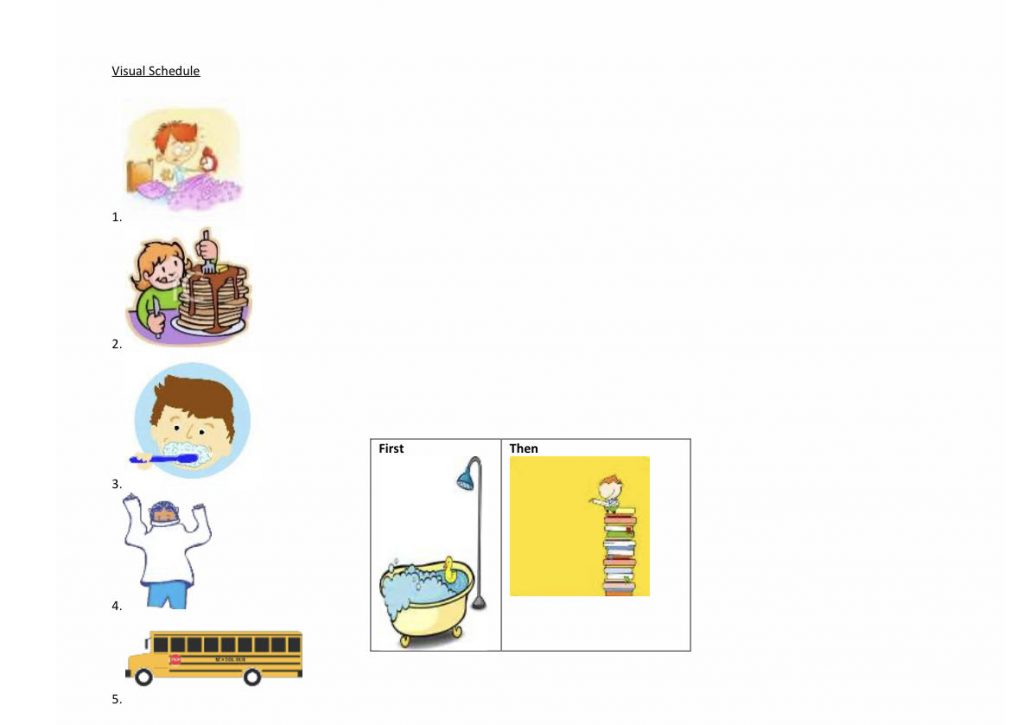Using Visuals Aids to Support Daily Routines
Have you ever wondered what a visual schedule is or a first then board? These visual supports can be used as a way to communicate with children who have difficulty understanding or communicating their needs. They support communication between parents, caregivers, and children and are useful in promoting social interaction, language, and positive behaviors. Examples of visual supports include communication boards, first then boards, or visual schedules. Children who have difficulty communicating may experience frustration in their daily routines. Visuals supports are useful in promoting direction following, completion of daily routines, communication of needs and requests, and positive social interaction.
A “first then board” can be used as a behavioral support or to teach new skills. These boards generally include a non-preferred task followed by a more preferred task. A child who does not prefer bath time may have a board that includes bath first then story time.
Visual schedules are used to help children predict their daily routines or decrease rigid behaviors. They help promote new or familiar routines depending on how they are used. They can be used to support daily routines at home and school such as following directions, taking a bath or brushing teeth. Visuals also help communicate boundaries or expected behaviors. For example, a stop sign could be used to set the expectation that one should stay within the designated area or building. Visual supports are useful in building communication skills, independence with daily routines, and social interaction.
Reference
Loring,Whitney F. M. (2011, March). Visual Supports and Autism Spectrum Disorders. Autism Speaks. https://www.autismspeaks.org/tool-kit/atnair-p-visual-supports-and-autism


